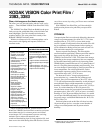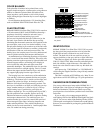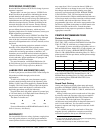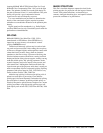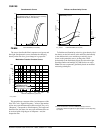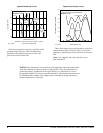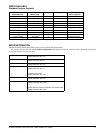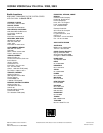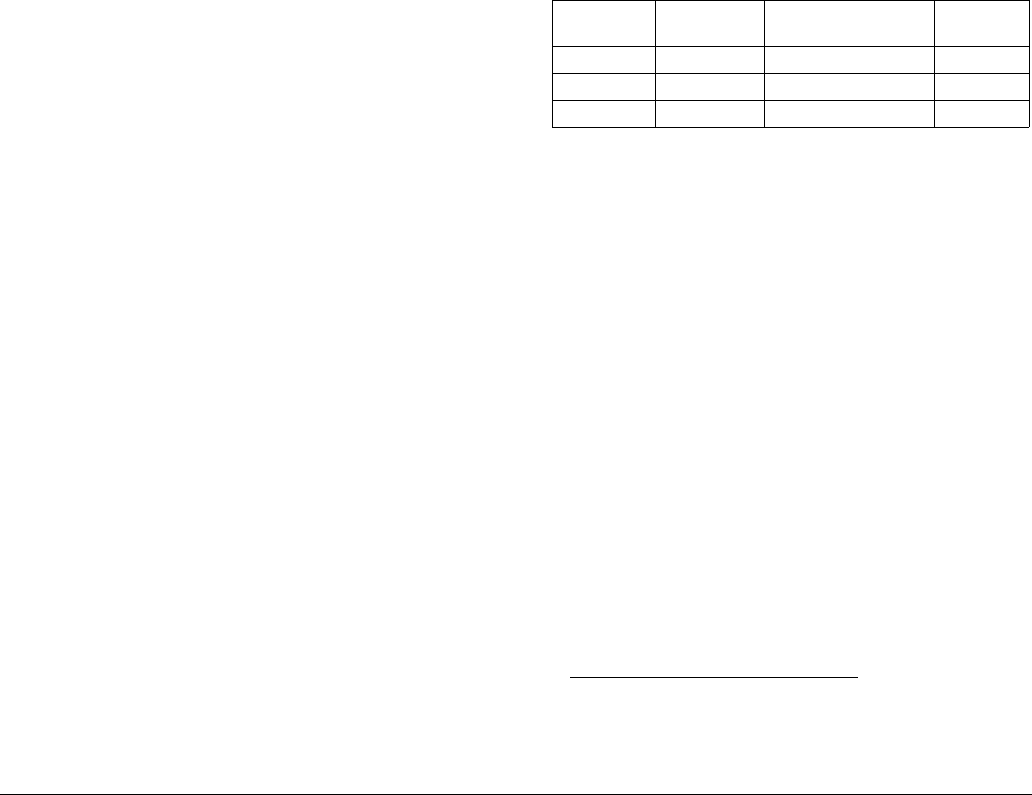
KODAK VISION Color Print Film / 2383, 3383 • H-1-2383t 3
PROCESSING CONDITIONS
Process this film in Process ECP-2D. No change in process
sequence is required.
Because there is no rem-jet to remove, VISION Color
Print Film offers the potential for eliminating the current
prebath chemicals and reducing water usage. However,
exercise care if the rem-jet removal steps are eliminated, as
replenishment rates will change dramatically if dry film
enters the developer directly. Soluble dye buildup in the
seasoned developer will also increase. Greatly reducing
water flow will lead to increased concentrations of total
process effluent from the laboratory, which may have
regulatory implications. For further assistance, contact your
Kodak engineering representative.
The antihalation dyes used in VISION Color Print Film
are decolorized and removed during processing. Although
most of the dye is removed in the developer, complete
removal is also dependent on the “tail end” solutions, such as
the bleach.
To prevent static during projection, maintain a relative
humidity of 50 to 60 percent in the projection room.
It is important that you maintain a “clean” process: proper
solution mix and storage procedures to minimize “tar”
formation, process machine and recirculation designed to
minimize aeration (e.g., submerged racks), periodic cleaning
of racks and tanks, proper maintenance of squeegees and
wiper blades, and efficient filtration.
For more information, see KODAK Publication No.
H-24.09, Manual for Processing KODAK Motion Picture
Films, Process ECP-2D Specifications, Module 9.
LABORATORY AIM DENSITIES (LAD)
To control your process, use Process ECP-2 control strips for
this product available through your local sales
representative.
To aid in color timing and curve placement, negative
originals should be timed relative to the Laboratory Aim
Density (LAD) Control Film supplied by Eastman Kodak
Company. The LAD Control Film provides both objective
sensitometric control and subjective verification of the
duplicating procedures used by the laboratory.
For print films, the LAD patch is printed to a neutral gray
of 1.0 visual density (1.00 Equivalent Neutral Density) on
the processed print at the setup lights.
The Status A densities are:
For more information, see KODAK Publication No. H-61,
LAD—Laboratory Aim Density.
RECIPROCITY
You can print this film on a variety of printers, ranging from
slow step-optical printers to very high-speed continuous
contact printers used for release printing. Exposure times
RGB
Density 1.09 1.06 1.03
may range from 1/10 of a second to almost 1/3000 of a
second, with little or no change in tone scale. For printers
that change exposure time during printing, new speed
reciprocity correction should be used. KODAK VISION
Color Print Film / 2383, 3383 has improved fade and
dissolve characteristics. Printers with mechanical fader cams
will no longer need to use filter correction to achieve neutral
color balance with fades and dissolves. Printers with
programmable light valves will need to reprogram the fade
and dissolve algorithm in the printer to obtain neutral color
balance with fades and dissolves. Consult the printer
manufacturer for the proper test procedure to obtain the
appropriate corrections.
PRINTER RECOMMENDATIONS
Pictorial Printing
The printer setup for KODAK VISION Color Print
Film / 2383, 3383 is similar to EASTMAN Color Print Film
2386 / E / 3386 / E, with little or no change required.
For example, if you use an additive-type printer, such as a
Bell and Howell Printer, Model 6123, to print originals, you
can use a 90 V dc lamp, a KODAK WRATTEN Gelatin
Filter No. 2B, a KODAK Heat Absorbing Glass, No. 2043, a
printer speed of 240 feet per minute, and the printer settings
in the table below:
You can also expose this film with a subtractive printer
with a KODAK WRATTEN Gelatin Filter No. 2B, a
KODAK Heat Absorbing Glass, No. 2043, and suitable
color-balancing filters (KODAK WRATTEN Color
Compensating Filters).
Sound-Track Printing
Analog and digital sound-track printer setup and control
procedures for KODAK VISION Color Print Film / 2383,
3383 are similar to Film 2386 / E / 3386 / E, with little or no
change required.
Analog variable area positive sound tracks of silver plus
dye usually restrict the exposure to the top two emulsion
layers by inserting KODAK WRATTEN Gelatin Filters
No. 12 and No. 2B
2
in the light beam. The optimum
variable-area sound-track density for the print is between 1.1
and 1.8 (read at 800 nm). You can achieve excellent
frequency response and a high signal-to-noise ratio in this
density range.
For a variable area positive sound track of silver plus
magenta dye only, printed from a negative sound track,
restrict the exposure to the top two emulsion layers by
Beam TRIM Neutral-Density
Filter
TAPE
Red 14 0.40 25
Green 14 0.50 25
Blue 11 0.60 25
2. You can omit the No. 2B Filter without affecting the sound quality. Using
this filter is an operational convenience to
conform with printer setup for other products that require it.



